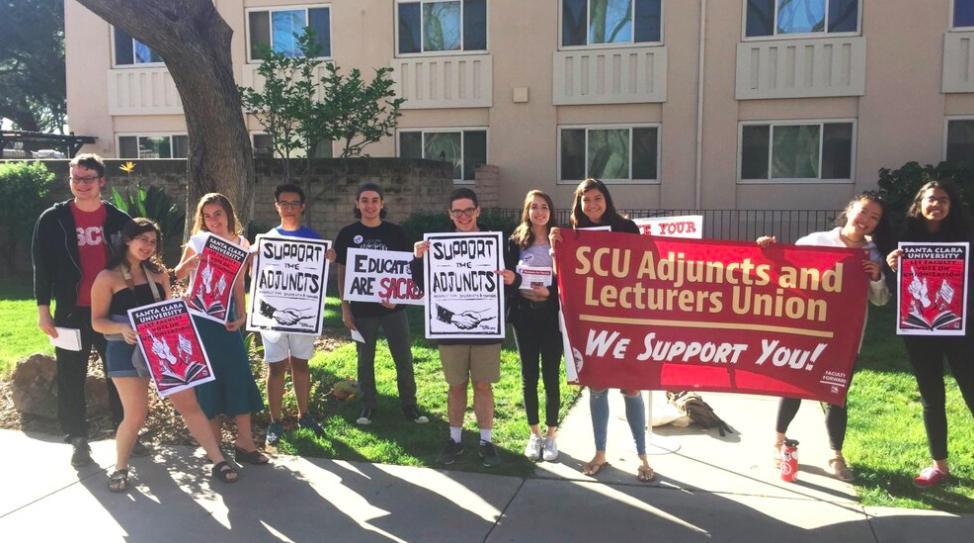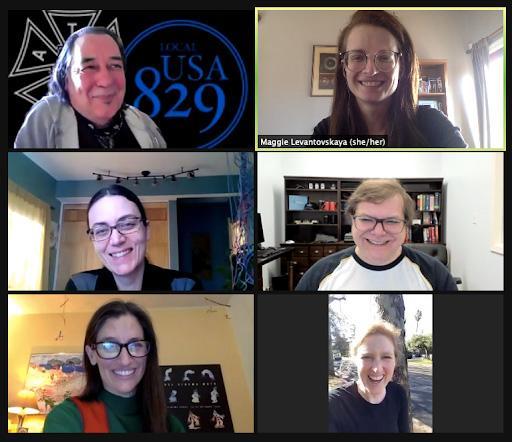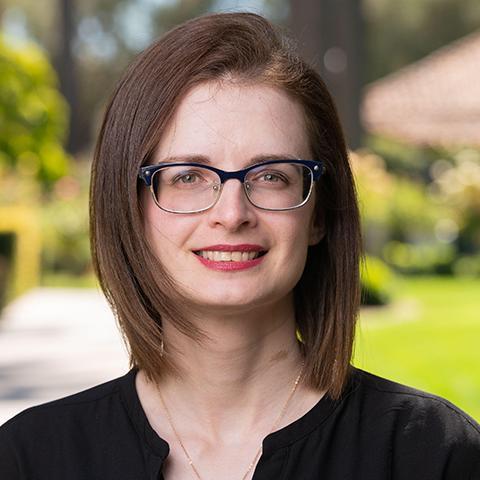Organizing Goes Virtual: Building a Union while Sheltering in Place
By Maggie Levantovskaya
Organizing your workplace is unpaid work. It’s the work you do before you start the workday. It’s the work you do at the end of your workday, even when you feel too tired to work. It’s the work you do between work, before stepping into a classroom, and after attending a committee meeting. It’s energizing and depleting. It makes you feel part of a collective, but also isolated and misunderstood. It’s the work of listening, of lifting up, but also taking up space, even when you’re terrified to do so. It’s the work of caring for your fellow workers.
My fellow organizers and I have been working toward a union since 2017. For me, this has been the most challenging project of my entire academic career. Very little about my training prepared me for movement building. Graduate school taught me how to read closely, write in a nuanced way and spend a lot of time alone. Defending my PhD didn’t come with more time for labor activism. As a precariously employed academic, I moved from one part of the country to another, leaving behind family and friends. I juggled work with chronic illness and disability, focusing on day-to-day survival. When I got to SCU, this changed. I was still contingent and disabled but also ready to fight for our working conditions, which is to say our students’ learning conditions.
An effective organizer follows Dolores Huerta’s credo: “every moment is an organizing opportunity.” Taking advantage of those opportunities gradually became something I relished. The chatter by the copy machine, the walks around campus to put up flyers, the coffee dates with my fellow adjuncts became sources of pleasure. The meetings with my fellow organizers became a routine I looked forward to because it allowed me to spend time with people who shared my vision. The events with students introduced me to the activists on campus and showed me the extent to which students care about their professors.

Just when I started to get used to organizing, COVID-19 hit. My days became dominated by teaching online. My head became filled with worry about high-risk family members and friends. I found myself genuinely wondering: Is this the end? Will the pandemic also kill our movement? It was easy to imagine that without a physical space our organizing would fall apart. I was also aware that my colleagues shared my constant anxiety about the virus’s rapid spread. Would anyone care about unionization in the midst of the pandemic? One part of me thought “absolutely not,” but another part of me knew that having a voice and a seat at the table were more important than ever. This motivated me when, like all other organizing groups, ours took to Zoom. What we discovered both pleasantly surprised me and confirmed something I already knew — that, in some cases, technology means more access.
I was familiar with technology’s potential to pull more participants into a movement from my experience with disability activism online. Built environments and physical protest conditions can be inaccessible. This is one of the reasons why many disability activists do much of their activism online. But that which benefits folks who live with illness and disability can also benefit those who are spread thin by care work, commutes and precarity. I knew from countless conversations with adjunct and lecturer colleagues that showing up to meetings on campus was hard, be it because of commitments or exhaustion.

The logistics of being a worker, caretaker, and commuter in the Bay Area are challenging indeed. Zoom, for all its limitations and faults, has given us greater flexibility. Not having to be in the same physical space for meetings has meant more participation and inclusion. My colleagues now regularly show up with small children in their laps. Some participate while driving. Others come while eating lunch or dinner. Still others are simply glad to attend a meeting from the comfort of their couch.
There’s a domestic intimacy that inevitably asserts itself over Zoom. You virtually enter people’s homes. You see them in their comfy clothes. You meet their babies, wandering cats, and barking dogs. All this helps to build community and solidarity — things we desperately need to survive this pandemic and to bring about labor justice in academia. The work of organizing is always about bringing people together. It’s difficult, unpaid work. It can be tedious and thankless. But it’s work that we do together, work that gives us meaning and makes us feel less alone.
